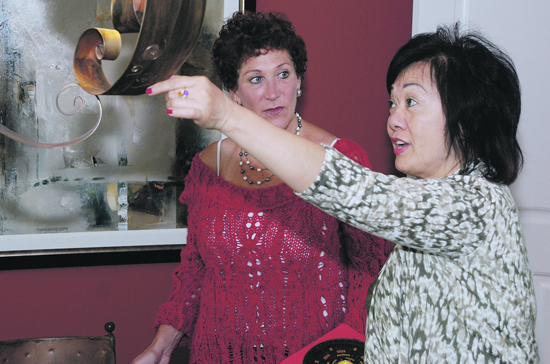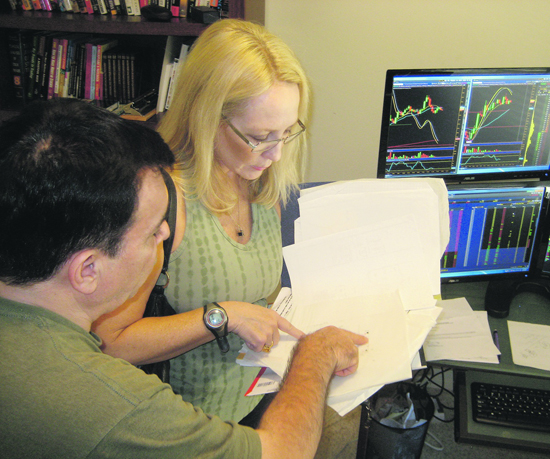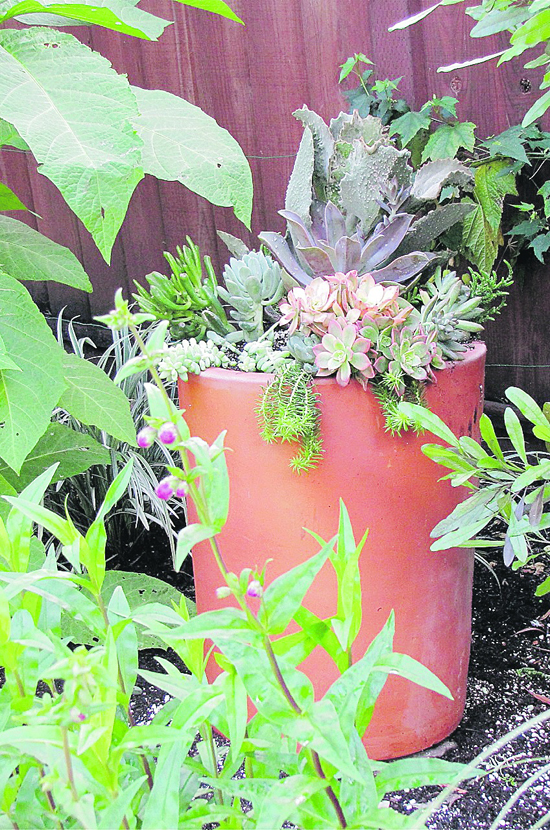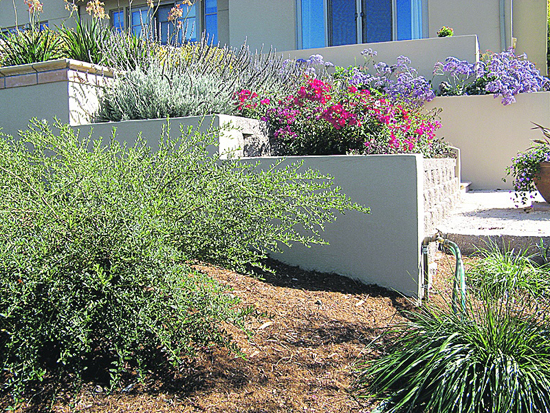 | | | Marsha Golangco likes a round light fixture above the dining room table to channel positive energy
Photo Ohlen Alexander
| | | | | | Everybody seems to know something about Feng Shui - it's about numbers, colors, energy or direction; it's Chinese; all of Hong Kong's buildings are built following its rules; red is good; the number eight is good. Some people spend their entire lives studying this ancient art of placement.
 "Feng Shui literally means wind and water, which are two of nature's dynamic forces influencing the flow of Chi, the energy of life," says Lafayette interior designer Lynda Catlin. "This ancient art and science balances, enhances and directs energy flow in a harmonious way within our environments, thus improving our life situations."
"Feng Shui literally means wind and water, which are two of nature's dynamic forces influencing the flow of Chi, the energy of life," says Lafayette interior designer Lynda Catlin. "This ancient art and science balances, enhances and directs energy flow in a harmonious way within our environments, thus improving our life situations."
 In Lamorinda, many residents incorporate some aspects of Feng Shui, either by studying it themselves or asking for help from professionals. All of those we met get a sense of balance and harmony from the practice, even when adding only a few elements of the complex system into their lives.
In Lamorinda, many residents incorporate some aspects of Feng Shui, either by studying it themselves or asking for help from professionals. All of those we met get a sense of balance and harmony from the practice, even when adding only a few elements of the complex system into their lives.
 Interpretations of Feng Shui vary among the different disciplines or schools, says Catlin, who studied Bon Tibetan Buddhist Feng Shui. "To analyze a space, a core tool is the concept of the Bagua, the eight-sided symbol with the trigrams of the I-Ching arranged in an octagon with each side of the diagram representing a different aspect of life. It is superimposed upon a space and becomes a compass and tool for analysis of the life situations: career, knowledge, family, wealth, fame, relationships, creativity, benefactors, health."
Interpretations of Feng Shui vary among the different disciplines or schools, says Catlin, who studied Bon Tibetan Buddhist Feng Shui. "To analyze a space, a core tool is the concept of the Bagua, the eight-sided symbol with the trigrams of the I-Ching arranged in an octagon with each side of the diagram representing a different aspect of life. It is superimposed upon a space and becomes a compass and tool for analysis of the life situations: career, knowledge, family, wealth, fame, relationships, creativity, benefactors, health."
 Some forms of Feng Shui align the Bagua on the entry door of a space, while the more traditional Chinese form aligns it with the north, east, west and south.
Some forms of Feng Shui align the Bagua on the entry door of a space, while the more traditional Chinese form aligns it with the north, east, west and south.
 Teri Tanner taught herself Feng Shui and she always has a compass with her. Her bible is The Complete Idiot's Guide to Feng Shui. "When I bought my condo in Moraga I used to run my business from the garage, and it didn't work for me," she remembers. Tanner researched the favorable direction for herself, according to her birth year, and learned it is southwest. "I placed my office upstairs, my back to the southwest for support and I placed my fax machine so incoming faxes would come from that same direction," she explains.
Teri Tanner taught herself Feng Shui and she always has a compass with her. Her bible is The Complete Idiot's Guide to Feng Shui. "When I bought my condo in Moraga I used to run my business from the garage, and it didn't work for me," she remembers. Tanner researched the favorable direction for herself, according to her birth year, and learned it is southwest. "I placed my office upstairs, my back to the southwest for support and I placed my fax machine so incoming faxes would come from that same direction," she explains.
 Tanner says that her business thrived. Now that she is looking to purchase a house in Lafayette, the first thing she looks at is her compass and the orientation of the front door.
Tanner says that her business thrived. Now that she is looking to purchase a house in Lafayette, the first thing she looks at is her compass and the orientation of the front door.
 Jan Gruen met Marsha Golangco at a meeting of the California Professional Women in Building Council, and was very interested in the Chinese woman's practice of Feng Shui for builders. Gruen asked Golangco to come and take a look at her house.
Jan Gruen met Marsha Golangco at a meeting of the California Professional Women in Building Council, and was very interested in the Chinese woman's practice of Feng Shui for builders. Gruen asked Golangco to come and take a look at her house.
 "When she arrived, she just stopped at the curb and didn't move for a long moment," recalls Gruen, "then she proceeded and told me, 'Your mail box: it's at the wrong place,' then she went on and we discussed the whole house."
"When she arrived, she just stopped at the curb and didn't move for a long moment," recalls Gruen, "then she proceeded and told me, 'Your mail box: it's at the wrong place,' then she went on and we discussed the whole house."
 Golangco pointed to the bare white wall where the chimney is set. "This is not good Feng Shui. Fire burns wood, it creates ashes and absorbs oxygen; you need to balance it."
Golangco pointed to the bare white wall where the chimney is set. "This is not good Feng Shui. Fire burns wood, it creates ashes and absorbs oxygen; you need to balance it."
 There are five elements in Feng Shui: water, wood, fire, earth and metal - all of the elements need to be balanced. As a remedy to the negativity of the fire place, Golangco proposed putting tall green plants close to the chimney and a water feature, or a picture of a water element, above the chimney.
There are five elements in Feng Shui: water, wood, fire, earth and metal - all of the elements need to be balanced. As a remedy to the negativity of the fire place, Golangco proposed putting tall green plants close to the chimney and a water feature, or a picture of a water element, above the chimney.
 Many things in Feng Shui are symbolic. Water is the element of the north and its colors are black, blue and white. Shapes also play a role. For a builder, a simple square is the best possible shape for a building, but when it comes to a dining table, no sharp angles. A round shape is a favorite since the circular pattern channels positive energy.
Many things in Feng Shui are symbolic. Water is the element of the north and its colors are black, blue and white. Shapes also play a role. For a builder, a simple square is the best possible shape for a building, but when it comes to a dining table, no sharp angles. A round shape is a favorite since the circular pattern channels positive energy.
 The symbolic colors, elements and shapes are just as important in the garden.
The symbolic colors, elements and shapes are just as important in the garden.
 "I use Feng Shui as a complement to western techniques I studied to create gardens," says local landscape designer Susan Morrison pointing to a container in her own garden. "Here, the silvery color that echoes throughout the succulent selection represents metal in the Feng Shui creativity cycle, and should be balanced by earth (represented by the terra cotta color of the container) and water (represented by the trailing shapes of the sedum and burrows tails, which will eventually cascade down the side of the pot). If the container were bright red instead (fire), the high contrast would make the composition agitating rather than soothing. This combination works from a western garden design standpoint as well, as contemporary planting design emphasizes contrasting textures and forms rather than flower color."
"I use Feng Shui as a complement to western techniques I studied to create gardens," says local landscape designer Susan Morrison pointing to a container in her own garden. "Here, the silvery color that echoes throughout the succulent selection represents metal in the Feng Shui creativity cycle, and should be balanced by earth (represented by the terra cotta color of the container) and water (represented by the trailing shapes of the sedum and burrows tails, which will eventually cascade down the side of the pot). If the container were bright red instead (fire), the high contrast would make the composition agitating rather than soothing. This combination works from a western garden design standpoint as well, as contemporary planting design emphasizes contrasting textures and forms rather than flower color."
 Morrison says she uses Feng Shui to check her designs and sometimes to solve a problem, like an unused corner, or a place that is not inviting enough.
Morrison says she uses Feng Shui to check her designs and sometimes to solve a problem, like an unused corner, or a place that is not inviting enough.
 "Harmony and balance are crucial factors in Feng Shui and can be achieved on the physical level and on the energetic or quantum physics level," says Catlin. "Many factors are taken into account including geological elements, positioning of structures within the environment, the architectural and interior layout of a space, and the inhabitants."
"Harmony and balance are crucial factors in Feng Shui and can be achieved on the physical level and on the energetic or quantum physics level," says Catlin. "Many factors are taken into account including geological elements, positioning of structures within the environment, the architectural and interior layout of a space, and the inhabitants."

|



